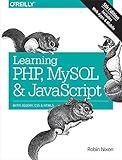Best PHP Date Format Tools to Buy in January 2026
In order to change the date format in PHP Laravel, you can use the format() method provided by the Carbon library. Carbon is a package that extends the DateTime class, making it easier to work with dates and times in PHP.
First, make sure you have Carbon installed in your Laravel project. You can install it using Composer by running the following command:
composer require nesbot/carbon
Next, you can use the format() method to change the date format. For example, if you have a date stored in a variable $date and you want to change it to a different format, you can do so like this:
use Carbon\Carbon;
$date = Carbon::parse($date)->format('Y-m-d');
In this example, we are using the parse() method to create a Carbon instance from the original date, and then using the format() method to change it to the desired format (in this case, 'Y-m-d' which represents year, month, and day).
You can change the format string to any valid PHP date format. You can refer to the PHP documentation for the list of available format characters.
By using Carbon and its format() method, you can easily change the date format in your PHP Laravel application.
How to parse and format date in Laravel request?
You can parse and format dates in Laravel request by using the Carbon library, which is included in Laravel by default.
Here is an example of how you can parse and format a date in a Laravel request:
use Carbon\Carbon;
public function store(Request $request) { // Parse the date from the request $parsedDate = Carbon::parse($request->input('date'));
// Format the parsed date
$formattedDate = $parsedDate->format('Y-m-d H:i:s');
// Save the formatted date to the database or do whatever you need to do with it
}
In this example, we are using the parse method from the Carbon library to parse the date from the request. We then use the format method to format the parsed date into the desired format. Finally, you can save or process the formatted date as needed.
Remember to include the Carbon library at the top of your controller file:
use Carbon\Carbon;
This example demonstrates how to parse and format a date, but you can modify the format string to output the date in any desired format.
How to format date in Laravel validation messages?
In Laravel, you can format the date in validation messages by using the :date format token.
Here's an example of how you can format a date in Laravel validation messages:
$rules = [ 'date' => 'required|date_format:Y-m-d', ];
$messages = [ 'date.date_format' => 'The :attribute must be in the format YYYY-MM-DD', ];
$validator = Validator::make($request->all(), $rules, $messages);
if ($validator->fails()) { return redirect() ->back() ->withErrors($validator) ->withInput(); }
In the above example, the :attribute token will be replaced with the actual attribute name (e.g., 'date') and the :date token will be replaced with the formatted date value (e.g., 'YYYY-MM-DD'). You can customize the format according to your requirements by changing the date_format value in the validation rules.
What is the difference between date and datetime format in Laravel?
In Laravel, the date format represents a date without a time component, while the datetime format represents a date with a time component.
The date format is typically used for storing and working with dates such as birthdays, events, or deadlines, where only the date itself is important.
The datetime format, on the other hand, is used when both the date and time of an event are important, such as for scheduling appointments or recording timestamped data.
In Laravel, both date and datetime formats are used with the Carbon PHP library for convenient and consistent handling of date and time values.
What is the default date format in Laravel?
The default date format in Laravel is "Y-m-d H:i:s".
What is the impact of changing date format in Laravel database queries?
Changing the date format in Laravel database queries can have major impacts on the functionality and accuracy of your application.
One of the main impacts is that it can affect how dates are stored and retrieved from the database. If the date format is changed in the database queries, it can lead to incorrect data being stored or retrieved, as the database may not be able to interpret the dates correctly.
Additionally, changing the date format in database queries can also affect how dates are displayed to users in the frontend of the application. This can impact the user experience and could lead to confusion or errors if the dates are not displayed in the correct format.
Overall, it is important to carefully consider the implications of changing the date format in database queries and to thoroughly test the changes to ensure that they do not have any negative impacts on the functionality of the application.



